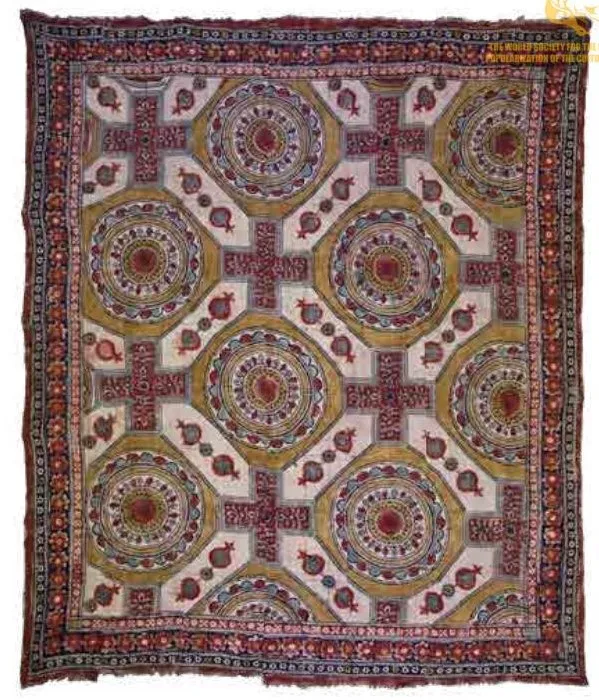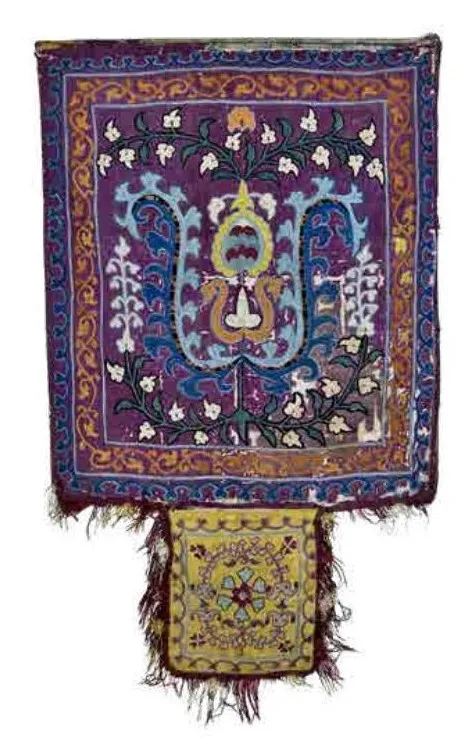By the end of the 19th - beginning of the 20th centuries in Khiva, Bukhara, Samarkand, Kokand, Tashkent, Khujand, leading schools of carved wood emerged, which are still famous for their masters. They used two main artistic carving methods: a simple decoration technique with a champlevé or incised pattern, and complex carving without a background, created by removing the background. The art of wood carvers was also manifested in the manufacture of kalybs - special stamps for applying patterns to printed fabrics. The museum also presents samples of household items decorated with wood painting. Among them, beautiful samples of saddles created by the masters of Samarkand stand out.
Artistic textiles of Uzbek craftswomen impress with the elegance of patterns and richness of color - hand embroidery, heeled prints, abr fabrics, carpets and gold embroidery. There were embroidery centers in almost all cities and villages. Craftswomen used homespun cloth and natural dyes. Unfortunately, in the second half of the 19th century, the use of factory-made aniline dyes drastically reduced the quality of hand embroidery. Embroidery was distributed mainly in trade and craft cities and large villages, centers of the ancient settled agriculture of Uzbekistan, it was not only in Khorezm.
Plant shoots, buds, pomegranate fruits, almonds and other plant patterns were the main embroidery motifs. A contrasting combination of colors and large ornamental elements are typical for Samarkand decorative embroideries. The pattern of Bukhara, Ferghana and Pskent panels is lyrical and subtle with their characteristic variety of crimson, light green and purple hues.
You can learn more about the topic in the book-album "Collection of the Samarkand State Museum-Reserve" (XVIII volume) in the series "Cultural Legacy of Uzbekistan in the World Collections".
The main sponsor of the project is the oilfield services company Eriell-Group.


